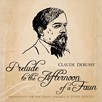
Symphony No. 8 in B Minor
Composer: Franz Schubert
Instrument: Percussion Ensemble
Level: Advanced
Published: 2013
Price: €50.00
Item details
-
Description +
-
Arranged by János Kovács
Duration: 23 min.“Considering The “symbol tone” which generates the most important modulation of a musical part appears as a clear system in some beethovenian sonata forms from different periods.
At the beginning of the work it seems to be hidden (for example merely as a first, strange, insignificant tone), however, progressively it will take various forms integrated in accordic, traditional trisonic components: root, third, fifth, (dominant) seventh, (diminished) ninth with all the possible alterations of classical harmony (diminished, augmented), as we will see in the case of Schubert’s “mysterious” Unfinished Symphony...
-
-
Instrumentation +
-
Percussion Ensemble:
2 Vibraphones
3 Marimbas
-
-
About the composer +
-
Franz Peter Schubert (31 January 1797 – 19 November 1828) was an Austrian composer. Schubert died before his 32nd birthday, but was extremely prolific during his lifetime. His output consists of over six hundred secular vocal works (mainly Lieder), seven complete symphonies, sacred music, operas, incidental music and a large body of chamber and piano music. Appreciation of his music while he was alive was limited to a relatively small circle of admirers in Vienna, but interest in his work increased significantly in the decades following his death. Felix Mendelssohn, Robert Schumann, Franz Liszt, Johannes Brahms and other 19th-century composers discovered and championed his works. Today, Schubert is ranked among the greatest composers of the late Classical and early Romantic eras and is one of the most frequently performed composers of the early nineteenth century.
-
-
Reviews +
-
Percussive Notes, May 2014
The beauty of Franz Schubert’s symphonic music is apparent even when presented in this stripped-down version for keyboard percussion quintet. Here, the two-movement work is presented as a transcription of the original with regard to musical material and length. Two-mallet technique is used throughout, making the arrangement doable for intermediate percussion students.
For the most part, the three marimbas are assigned the string parts, with the two vibraphones covering the wind instruments’ material. To compensate for fewer instruments, many lines are presented in octaves to add fullness to the orchestration. As lead melodic lines occasionally occur in single instruments, potentially making several sections “accompaniment heavy,” mallet choice and balance will be crucial in creating a convincing performance. Beautiful and memorable, Schubert’s work will certainly find a new audience through the performance of this arrangement.
—Jason Baker
Percussive Notes, November 2016
As an experienced arranger of orchestral and vocal music for percussion ensemble, János Kovács has exceeded expectations again with a stellar arrangement of Schubert’s “Symphony No. 8.” In the two movements of this arrangement, the three marimbas generally represent the string section, while the two vibraphones portray the winds and brass. However, transference of Schubert’s intentions does not stop there. What impresses me most about this arrangement is Kovács’ attention to detail with specific mallet percussion articulations and roll notations, as well as the more often thought of instrumentation, range, and octave doubling. Arrangements often seem lacking in this level of thoughtful detail, being simply transcriptions of pitch and articulations from the original score, leaving much for the conductor and performers to determine. In this arrangement, though, Kovács demonstrates a finely tuned understanding of how to best articulate the sounds of orchestral instruments with mallet percussion. If you follow the notation exactly, the instruments will blend perfectly, and you will be as close to the orchestral sound as I think is possible. At 27 minutes, this piece may seem a big undertaking, but with all two-mallet parts and the straightforward tonality of Schubert, it is certainly playable by an advanced high school or intermediate- level college ensemble. Sharing marimbas does not seem possible, but in a pinch, the marimba three part could be played on a low-F instrument with no problem, or even a low-A, instead of a 5-octave. There are a few notes below A, but they are almost always doubled an octave above.
—Julie Licata
-
-
Credits +
-
Front Cover graphics and layout: Amália Kovács
Engraving: János Kovács & Johan Svitzer
Translation: Margit Szallós-Farkas
Printed in Copenhagen, Denmark
Copyright © Edition SVITZER
www.editionsvitzer.com
-



